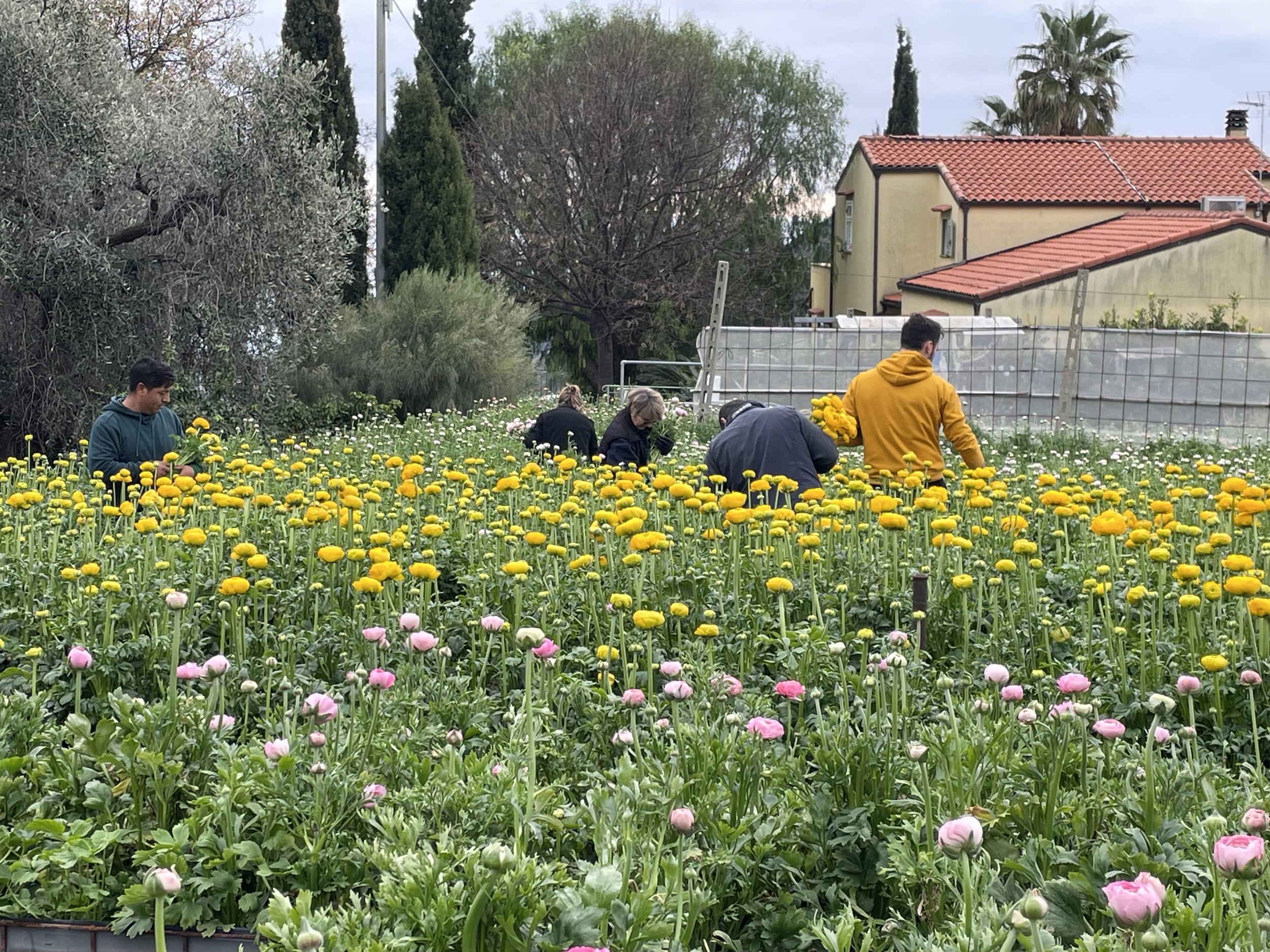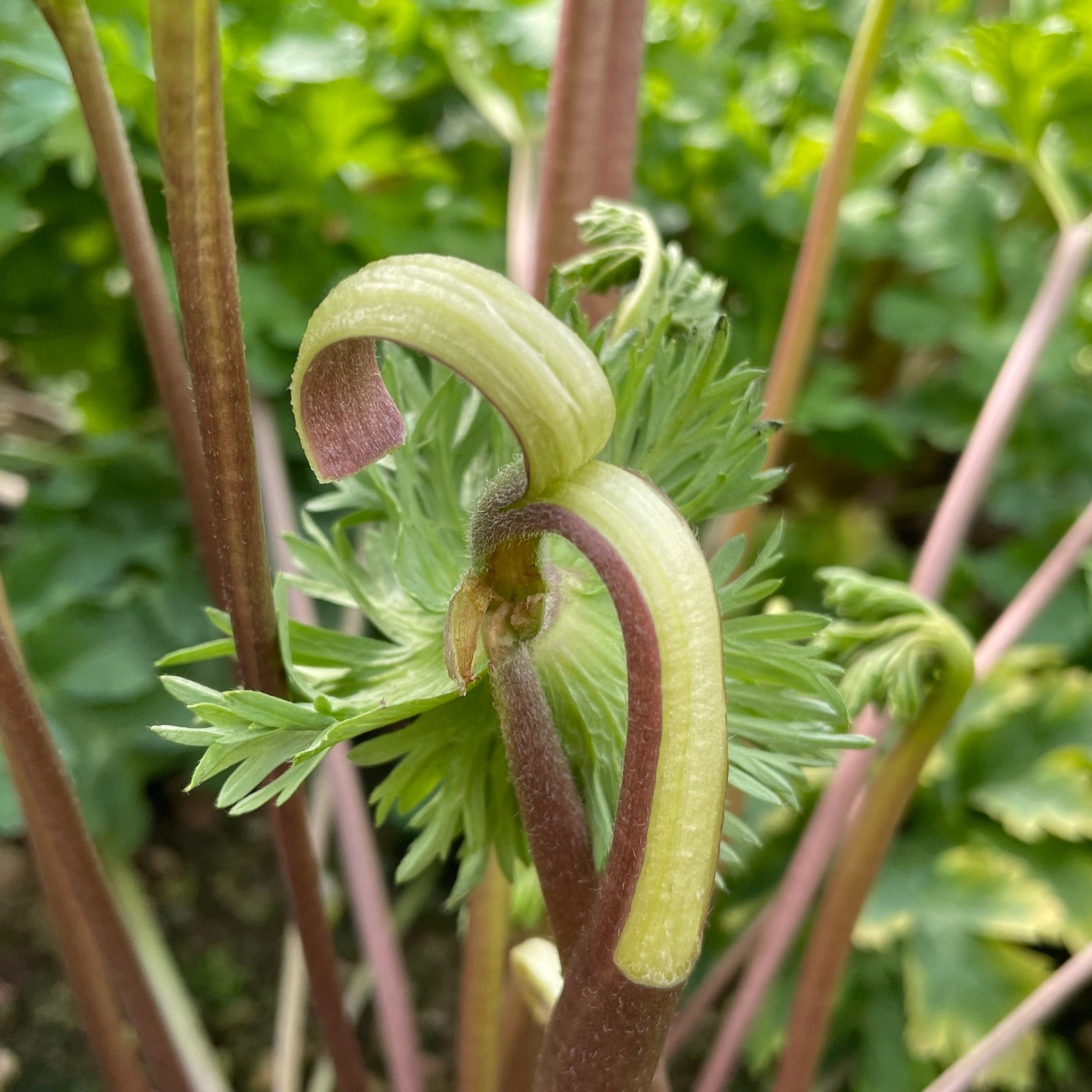
Planting & Care
Ranunculus & Anemones
Our Ranunculus and Anemones are stored and shipped dry in a vegetative stage. Upon arrival bulbs can be stored for several more weeks as long as they are stored dry.
They should not be exposed to any moisture or humidity until you wish to start the germination process.
To initiate this process the bulbs need to be soaked in water, ideally for a minimum of 8 hours. General practice with Italian growers is to soak the bulbs for 12 hours at a maximum temperature of + 12 °C.
To maintain oxygen levels soaking with slow running water or changing the water is recommended, but not essential. Most growers use a simple water tank or small container, which are perfectly adequate. When sufficiently soaked your bulbs should expand by 3 to 4 times their original size.
Growing Conditions
Once soaked, the Ranunculus bulbs then need to be stored in vermiculite. If using individual pots or seed cells to germinate, plant Ranunculus with its ‘fingers’ down to a depth of 1.5cm. They should remain moist but not be soaking wet. Store the bulbs for no less than 2 weeks at < + 10 °C.
Anemone bulbs in general prefer somewhat wetter conditions and should be planted either into larger pots or directly in the soil.
Ranunculus and Anemones can be grown in greenhouses, tunnels, under shade or outside. This mainly depends on the climate and season.
Light intensity and good air flow is very important. Additional shade is recommended during the first 4 weeks after planting to keep the soil cool until the foliage creates its own canopy.
Plant bulbs in raised beds in a well-drained soil. For pot, container or raised platform cultivation, use a free draining sterilised medium, low in EC with a pH of 6-6.5.
We advise a planting density of:
Size 3/4: 20-24 bulbs/m2
Size 4/5: 16-20 bulbs/m2
Size 5/7: 14-18 bulbs/m2
Ideal temperature range is +4°C to +9°C Night and +15°C Day. Ranunculus and Anemones can handle light frost or warmer days as long as the root system remains at around +8°C.
Provide additional ventilation if needed to control temperature and humidity.
Colibri Poppies
Biancheri Colibri® Poppies are a Premium product grown for their very large tissue/paper like flowers, high yields, and beautiful colours.
These Icelandic Poppies (Papaver nudicaule) are not to be confused with Opium Poppies (Papaver somniferous), grown for green pods. They are a significant improvement upon other selections of Icelandic Poppies and are therefore valued at a premium in the market.
Biancheri’s Colibri® varieties are available as seeds in 5 colours, with the addition of 2 mixed selections. They can be grown in a greenhouse, tunnel, shade house or open field.
Colibri Poppy seeds can be tricky to germinate but are a very rewarding crop once this is mastered.
Dusting the soil surface with fine vermiculite and then sowing gives a moist environment without covering the seeds which need light to germinate. Sowing with the moistened end of a toothpick is the best way to deal with these tiny seeds.
Growing Conditions
Ideal germination temperature is between +15°C and +18°C. Germination can be sporadic but can begin within 5-7 days. Do not allow soil to dry out during this period. Following germination, the plant is very sensitive to excess humidity, it is therefore recommended to avoid overhead irrigation and water from the bottom up.
Properly hardened off plants can be planted out after about a month. They will tolerate a light frost, but frost protection is beneficial. Plant in raised beds with spacing of 23-30cm, drip irrigation is best; keep moist but not wet. Well drained soil is very important. Watch out for slugs/snails and maintain low humidity by providing plenty of airflow. Grow as cool as possible.
Harvesting
Summer seeded plants, planted out in the autumn will overwinter and flower early summer to mid-autumn if picked regularly.
The perfect stage to pick Poppies is when flowers are cracking. Ship with flower-shell for easy transportation and to avoid damaging the flowers. Once the flowers are open, they are much more difficult to handle and process.
To ensure the longest vase life, place the freshly picked Colibri Poppies in a clean bucket with clean water. Flower food gives a longer vase life, 5-7 days.
Problem Solving
-
Extreme wet conditions and low light levels can make your plants more vulnerable for infection. The best way to keep Botrytis at bay is good air ventilation. Open tunnels as much as you can and introduce fans to keep the air moving. Drip irrigation as opposed to overhead is also recommended. Repeated applications of fungicide sprays will also help but are not an option for many organic based growers.
-
Anemones can suffer from flat stems if the soil contains too much Nitrogen. Ensure fertilisers applied which contain Nitrogen are used correctly, according to the plants needs. Avoid over-application of Nitrogen fertilisers, in particular quick-release forms which can be the cause of excessive Nitrogen levels in the soil. Follow recommended application rates based on soil test results and plant requirements.
Consider using slow-release Nitrogen fertilisers which release nutrients gradually over time. Slow release fertilisers provide a more sustained and controlled supply of Nitrogen to plants, reducing the risk of Nitrogen damage.
-
Overwatering can cause root-rot and damage to foliage as oxygen flow to the roots is reduced. Ensure plant roots have good air-flow and soil is free-draining to reduce the risk of overwatering.
Typical signs of overwatering include severe lower leaf yellowing and leaf loss.
-
Ranunculus can be affected by low calcium levels in the soil, causing droopy stems. Ensure that soil has a balanced supply of nutrients, including calcium. Incorporate organic matter or fertiliser (e.g. gypsum) into the soil as it can improve soil structure and nutrient availability.
-
Anemones are affected by split stems when phosphorus levels in the soil are too high. Excessive phosphorus levels can lead to nutrient imbalances and potential harm to your plants. Regularly test soil nutrient levels and avoid the over-application of fertilisers.
Split Stems
Indications of Overwatering
Flat Stems
Droopy Stems
Signs of Botrytis








